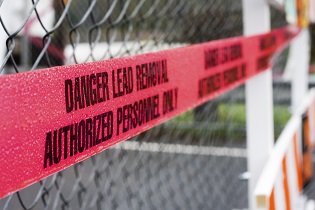 The threat of exposure to high levels of lead remains real for Americans living and working in unsafe conditions.
The threat of exposure to high levels of lead remains real for Americans living and working in unsafe conditions.
The Centers for Disease Control and Prevention says children living in 4 million U.S. households are being exposed to high levels of lead. Children living at or below the poverty line who live in older housing are at greatest risk.
Lead poisoning occurs when lead builds up in the body, often over a period of months or years. Research indicates about 500,000 U.S. children between the ages of 1 and 5 have blood lead levels above 5 micrograms per deciliter, the reference level at which the CDC recommends public health actions be initiated. Children under the age of 6 are especially vulnerable because their growing bodies absorb more lead than adults and because they tend to put their hands or other objects, which may be contaminated with lead dust, into their mouths.
The signs and symptoms of lead poisoning often don't appear until dangerous amounts of lead have accumulated. Even low levels of lead in blood have been shown to affect IQ, the ability to pay attention and academic achievement. At very high levels, lead poisoning can be fatal. The effects of lead exposure cannot be corrected.
Lead can be found in all parts of our environment including the air, the soil, water and inside our homes. Lead has been used in a large variety of products including paint, ceramics, batteries and plumbing materials.
Typically, children are poisoned by lead-based paint and lead-contaminated dust in older buildings (built before 1978).
Adults who work with batteries, do home renovations or work in auto repair shops also may be exposed to lead. Eating or drinking from dishes or glasses that contain lead poses a risk, too.
There is no safe blood level of lead, so it is important to take steps to prevent exposure to lead. The EPA says simple steps, such as keeping your home clean and well-maintained, can go a long way in preventing lead exposure.
The EPA also recommends you:
Review this checklist to identify sources of lead.
The U.S. Department of Health and Human Services and the CDC sponsor National Lead Poisoning Prevention Week, Oct. 20-26, 2019. The annual event focuses on the many ways to prevent lead exposure to children before they are harmed.
There are no items in your cart